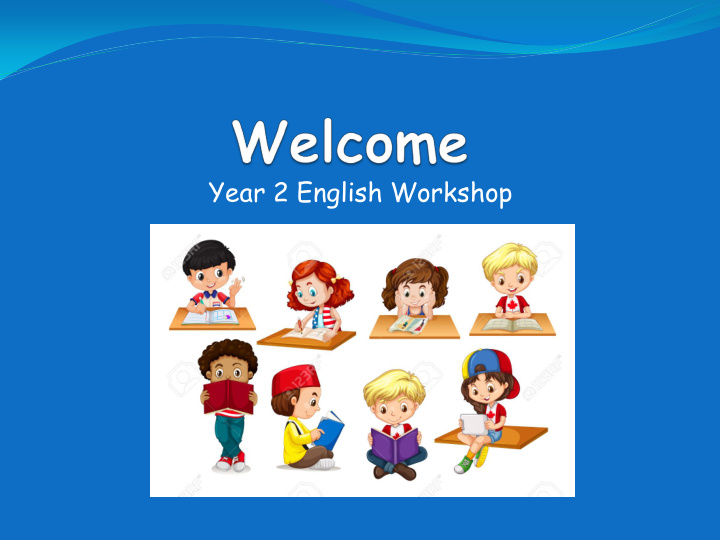



Year 2 English Workshop
Agenda Writing Spelling Phonics Reading: Phonics Word reading Comprehension Helping at home
Spelling Children need to learn how to spell: • National Curriculum words • using all the taught phonetic sounds • using mnemonics and by using words within words • using suffixes
Common Exception Words
Contractions
Possessive Apostrophe
Homophones
Suffixes - ment, -ness, -ful, -less, -ly
Split digraphs A digraph (2 letters stuck together) which has been split up. Another letter jumps in the middle.
Phonics to support writing Rehearse sentences Say word and sound it out Remembering digraph sounds and applying in writing Breaking longer words into chunks Show increasing knowledge of phonics sounds eg tim, tighm, tiem, time Best bet!!
Phonics to support writing Applying new suffixes learnt eg s, es, ed, est, ing endings Re-reading to check phonics and spellings Learning spelling rules when adding a suffix to a root word. i.e. hop - hopping hope - hoping
Phonics to support reading Confident readers - decode words and understand words Say each sound and blend together Need to notice digraph sounds in words Need to notice split digraphs Say sound correctly Be careful blending adjacent consonants
Phonics to support reading Breaking longer words into syllables – chunking Recognising common suffixes eg: ing, s, ly, est, ed Sounding out once then remembering the word throughout book Move on to reading without sounding out often Read fluently without sounding out and blending. Quickly recognise common exception words.
Reading strategies
SAT papers Finding words
SAT papers Meaning of words
SAT papers Understanding the text
Sequencing
SAT papers Sequencing
Predicting
SAT papers Inference Characters
Comparing books
Helping at home Writing Reading Writing for a purpose Reading books Spellings Reading for a purpose Dictation Talking about the books Handwriting Family reading Games Visit the Library or book shops Websites
Thank you for coming Please complete the feedback sheet
Recommend
More recommend